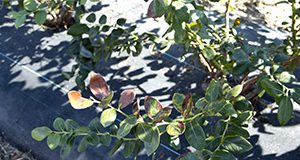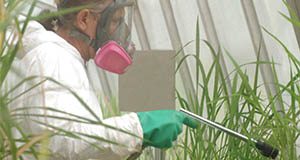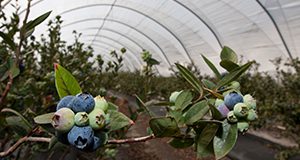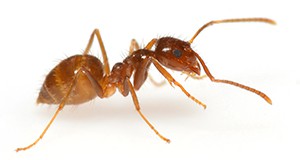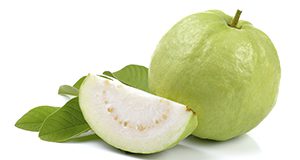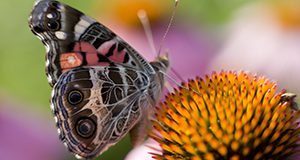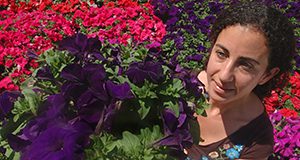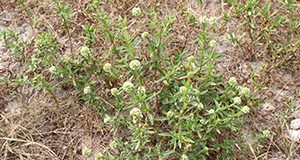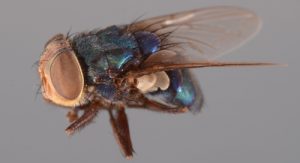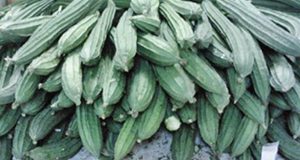Bacterial wilt is a newly discovered disease of blueberry in Florida. Plants with bacterial wilt will show signs of water stress such as wilting and marginal leaf burn. The disease was initially confirmed on three farms in Florida. This three-page fact sheet describes the symptoms, occurrence, and management of bacterial wilt in blueberry. Written by Philip F. Harmon, Carrie Harmon, and Dave Norman and published by the Plant Pathology Department.
http://edis.ifas.ufl.edu/pp332
Category: Agriculture
Worker Protection Standard: Notification and Hazard Communication
In 1992, the US Environmental Protection Agency (EPA) issued a comprehensive regulation called the Worker Protection Standard for Agricultural Pesticides (WPS). The EPA has made several changes to the WPS since it was fully implemented in 1995. On November 2, 2015, the EPA made significant changes to the rule’s requirements. Most of the revised provisions will become effective January 2, 2017 and there are four provisions that are delayed until January 2, 2018. This five-page fact sheet answers questions regarding changes made to the rules about notification and hazard communication. Written by Frederick M. Fishel and Tatiana Sanchez, and published by the Agronomy Department.
http://edis.ifas.ufl.edu/pi266
Worker Protection Standard: Training Workers and Handlers under the 2016 Revision Requirements
In 1992, the US Environmental Protection Agency (EPA) issued a comprehensive regulation called the Worker Protection Standard for Agricultural Pesticides (WPS). The EPA has made several changes to the WPS since it was fully implemented in 1995. On November 2, 2015, the EPA revised the WPS, making significant changes to the rule’s requirements. Most of the revised provisions will become effective January 2, 2017; there are four provisions that are delayed until January 2, 2018. This five-page fact sheet answers questions regarding changes made to the rules about how to train Workers and Handlers. Written by Frederick M. Fishel and published by the Agronomy Department.
http://edis.ifas.ufl.edu/pi268
Worker Protection Standard: Certified Crop Advisor Exemption
In 1992, the US Environmental Protection Agency (EPA) issued a comprehensive regulation called the Worker Protection Standard for Agricultural Pesticides (WPS). The EPA has made several changes to the WPS since it was fully implemented in 1995. On November 2, 2015, the EPA made significant changes to the rule’s requirements. Most of the revised provisions will become effective January 2, 2017 and there are four provisions that are delayed until January 2, 2018. This five-page fact sheet answers questions regarding changes made to the exemptions for Certified Crop Advisors. Written by Frederick M. Fishel and Tatiana Sanchez and published by the Agronomy Department.
http://edis.ifas.ufl.edu/pi265
Worker Protection Standard: Information at a Central Location
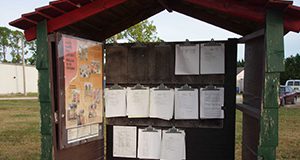
This three-page FAQ fact sheet answers questions about posting information at a central location per the regulations of the Worker Protection Standard (WPS).
Written by Frederick M. Fishel and Tatiana Sanchez and published by the Agronomy Department.
http://edis.ifas.ufl.edu/pi149
2011 South Florida Beef Forage Survey Results
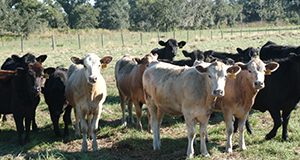 UF/IFAS Extension faculty and state specialists involved in the UF/IFAS South Florida Beef-Forage Program (SFBFP), in conjunction with the UF/IFAS Program Evaluation and Organizational Development unit, created a survey in 1982 that is used to evaluate ranch management practices. The survey is updated and distributed every five years to ranchers in 14 south Florida counties: Charlotte, Collier, DeSoto, Glades, Hardee, Hendry, Highlands, Hillsborough, Lee, Manatee, Martin, Okeechobee, Polk, and Sarasota. There were 102 anonymous responses in 2011. This 6-page fact sheet discusses characteristics of beef operations in south Florida, reproduction, production, marketing, herd health, nutrition, forage production, and environment. Written by Sonja Crawford, Christa Kirby, Tycee Prevatt, Brent Sellers, Maria Silveira, Bridget Stice, Joao Vendramini, and Lindsey Wiggins, and published by the UF Agronomy Department, October 2016.
UF/IFAS Extension faculty and state specialists involved in the UF/IFAS South Florida Beef-Forage Program (SFBFP), in conjunction with the UF/IFAS Program Evaluation and Organizational Development unit, created a survey in 1982 that is used to evaluate ranch management practices. The survey is updated and distributed every five years to ranchers in 14 south Florida counties: Charlotte, Collier, DeSoto, Glades, Hardee, Hendry, Highlands, Hillsborough, Lee, Manatee, Martin, Okeechobee, Polk, and Sarasota. There were 102 anonymous responses in 2011. This 6-page fact sheet discusses characteristics of beef operations in south Florida, reproduction, production, marketing, herd health, nutrition, forage production, and environment. Written by Sonja Crawford, Christa Kirby, Tycee Prevatt, Brent Sellers, Maria Silveira, Bridget Stice, Joao Vendramini, and Lindsey Wiggins, and published by the UF Agronomy Department, October 2016.
http://edis.ifas.ufl.edu/ag410
Worker Protection Standard: Owner and Immediate Family Exemption
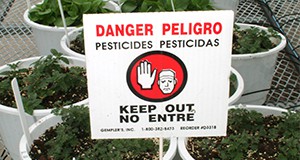
This three-page FAQ fact sheet answers questions about the exemptions for owners and their immediate families in the Worker Protection Standard (WPS).
Written by Frederick M. Fishel and Tatiana Sanchez and published by the Agronomy Department.
http://edis.ifas.ufl.edu/pi264
2016 Florida Blueberry Integrated Pest Management Guide
This 37-page fact sheet provides extensive information about integrated pest management for growing blueberry plants in Florida. Writteny by Jeffrey G. Williamson, Philip F. Harmon, Oscar E. Liburd, and Peter Dittmar and published by the Horticultural Sciences Department.
http://edis.ifas.ufl.edu/hs380
Worker Protection Standard: Personal Protective Equipment (PPE) 2016
In 1992, the US Environmental Protection Agency (EPA) issued a comprehensive regulation called the Worker Protection Standard for Agricultural Pesticides (WPS). The EPA has made several changes to the WPS since it was fully implemented in 1995. On November 2, 2015, the EPA made significant changes to the rule’s requirements. Most of the revised provisions will become effective January 2, 2017 and there are four provisions that are delayed until January 2, 2018. This five-page fact sheet answers questions regarding changes made to the rules about Personal Protective Equipment (PPE). Written by Frederick M. Fishel and published by the Agronomy Department.
http://edis.ifas.ufl.edu/pi267
The Pecan Truffle (Tuber lyonii): A Gourmet Truffle Native to the Southeastern United States
A truffle is a round, knobby, or lobed mushroom fruiting body that forms below ground. The “pecan truffle” (Tuber lyonii) is an edible truffle species, native to eastern North America. This fungus lives in a mutually beneficial relationship with the roots of some trees, including species of oak, hazelnut, and hickory trees, as well as the cultivated pecan tree. This four-page fact sheet describes the pecan truffle, its economic and culinary significance, morphology, and phenology and distribution. Written by Arthur C. Grupe II, Timothy Brenneman, Gregory Bonito, and Matthew E. Smith and published by the Plant Pathology Department.
http://edis.ifas.ufl.edu/pp330
Integrated Pest Management (IPM) of the Tawny Crazy Ant, Nylanderia fulva (Mayr)
The tawny crazy ant infests buildings and greenhouses, attacks crops, domestic animals, and honeybee hives, displaces native ant species, and disrupts electrical equipment. This 8-page fact sheet describes how to identify the ant and monitor for infestations. It explains how to eliminate food sources and harborages and presents an integrated pest management plan and specific approaches to control this pest ant. (Note: the tawny crazy ant is a serious pest that multiplies quickly and can easily become an overwhelming problem. If you suspect you have tawny crazy ants, the best approach is to call a licensed pest-control professional for help). Revised by Faith Oi, Dawn Calibeo, John Paige III, and Michael Bentley and published by the UF Department of Entomology and Nematology.
http://edis.ifas.ufl.edu/in889
Biology and Management of American Black Nightshade (Solanum americanum P. Mill.) in Tomato, Pepper, Cucurbit, and Strawberry
This three-page fact sheet describes the biology and management of American black nightshade, explaining how to control for it in tomato and pepper, cucurbits, and strawberry. Written by Nathan S. Boyd, Shawn Steed, Chris Marble, and Andrew MacRae and published by the Horticultural Sciences Department.
http://edis.ifas.ufl.edu/hs1176
Planting and Annual Cultural Maintenance Costs for Reset-Replacement Trees in a Florida Citrus Grove in 2016
Replacement of diseased, unproductive or dead trees is an important part of the cultural program for citrus groves. This five-page fact sheet uses prices and productivity rates collected through a telephone survey in May 2016 to analyze the different preferred management and reset practices. Written by Marina Burani-Arouca, Stephen H. Futch, and Ariel Singerman and published by the Food and Resource Economics Department.
http://edis.ifas.ufl.edu/fe995
Cost Estimates of Establishing and Producing Thai Guavas in Florida, 2014
The white Thai guava variety, which is very popular in the Asian market, is beginning to expand into mainstream markets. It has quick, high yields, is easily propagated and is tolerant to moisture stress and soil salinity. But even though it offers favorable returns, there has been little information about the cost of production. This 7-page fact sheet identifies inputs, costs, and yields considered to be typical of a well-managed five-acre Thai guava orchard in south Florida. Written by Stella Garcia, Edward A. Evans, and Jonathan Crane and published by the UF Department of Food and Resource Economics, August 2016.
http://edis.ifas.ufl.edu/fe998
Are Consumers Interested in Ornamental Plants That Benefit Pollinator Insects?
Population declines among bees, butterflies, and other pollinator insects are very worrying because 70% of the world’s food crop production depends upon these tiny insect workers. Fortunately, ninety million US households have yards, landscapes, or gardens that can enhance pollinator habitat and health. Consumers’ actions can drastically impact pollinator insects and even help them to recover. This 5-page fact sheet written by Hayk Khachatryan and Alicia Rihn and published by the UF Department of Food and Resource Economics, October 2016, describes a new UF/IFAS study of consumers’ actions and perceptions as they considered ornamental plants that benefit pollinators. It covers consumers’ current actions to aid pollinators, their interest in purchasing plants to help pollinators, and their perceptions about plant availability, and it describes strategies for merchants and producers to cater to consumer preferences for in-store communications/promotions and help them to find and purchase plants that aid pollinator insects.
http://edis.ifas.ufl.edu/fe997
Florida Consumer Preferences for Ornamental Landscape Plants
Certain attributes of ornamental landscape plants make them more attractive to consumers. This 5-page fact sheet written by Hayk Khachatryan and Alicia Rihn and published by the UF Department of Food and Resource Economics, October 2016, assesses the impacts of price, plant type, pollinator friendliness, production methods, and origin attributes on consumers’ purchasing likelihood for ornamental landscape plants. Recommendations for green industry stakeholders are also provided.
http://edis.ifas.ufl.edu/fe1000
Biology and Management of Whitehead Broom in Pastures
Whitehead broom, also known as shrubby false buttonweed or southern larraflower, is becoming problematic in south Florida pastures, hayfields, and rights-of-way. This 2-page fact sheet discusses a few options to control this species. Written by Brent Sellers and James McWhorter, and published by the UF Agronomy Department, August 2016.
http://edis.ifas.ufl.edu/ag409
New Featured Creatures for October 2016
- A Bark Beetle Hypothenemus eruditus Westwood, 1836
http://edis.ifas.ufl.edu/in1147 - Fourlined Plant Bug Poecilocapsus lineatus (Fabricius)
http://edis.ifas.ufl.edu/in1151 - Insidious Flower Bug, Minute Pirate Bug Orius insidiosus Say
http://edis.ifas.ufl.edu/in1148 - Longtailed Mealybug Pseudococcus longispinus (Targioni Tozzetti)
http://edis.ifas.ufl.edu/in1149 - Tuliptree Scale Toumeyella liriodendra (Gmelin)
http://edis.ifas.ufl.edu/in1150
Primary Screwworm Cochliomyia hominivorax (Coquerel) (Insecta: Diptera: Calliphoridae)
In October of 2016, the United States Department of Agriculture confirmed that the primary screwworm, also called the New World screwworm, has returned to Florida. The fly was found infesting Key deer on Big Pine Key. Key deer are an endangered species found only on the Florida Keys, and unfortunately several have died from the 2016 screwworm infestations, but the screwworm is not only a problem for deer and other wildlife. The pest poses a serious threat to all warm-blooded animals, including livestock, pets, and people, and it cost the US livestock industry billions of dollars before it was finally eradicated decades ago. This four-page fact sheet provides more information about this dangerous pest and how to spot it, as well as what to do and whom to contact if you suspect an infestation in your livestock or pets or in a wild animal. Written by Phillip E. Kaufman, Samantha M. Wisely, and Jennifer L. Gillett-Kaufman and published by the Entomology and Nematology Department.
If you suspect an infestation of screwworms in an animal, do not move the animal (to prevent spreading the infestation). Call 1-800-HELP-FLA (1-800-435-7352) inside Florida. Non-Florida residents should call (850) 410-3800.
http://edis.ifas.ufl.edu/in1146
Luffa: an Asian Vegetable Emerging in Florida
Luffa is the genus name of several tropical and subtropical plants in the cucumber family. Alternatively spelled “Loofa” or “Loofah,” the name is derived from the plant’s use as a material for sponges and dish cloths for bathing and cleaning dishes. This six page fact sheet describes the two types of Luffa, how to cultivate them, and what they can be used for. Written by Yucong Xie, Guodong Liu, Yuncong Li, and Kati Migliaccio and published by the Horticultural Sciences Department.
http://edis.ifas.ufl.edu/hs1285
